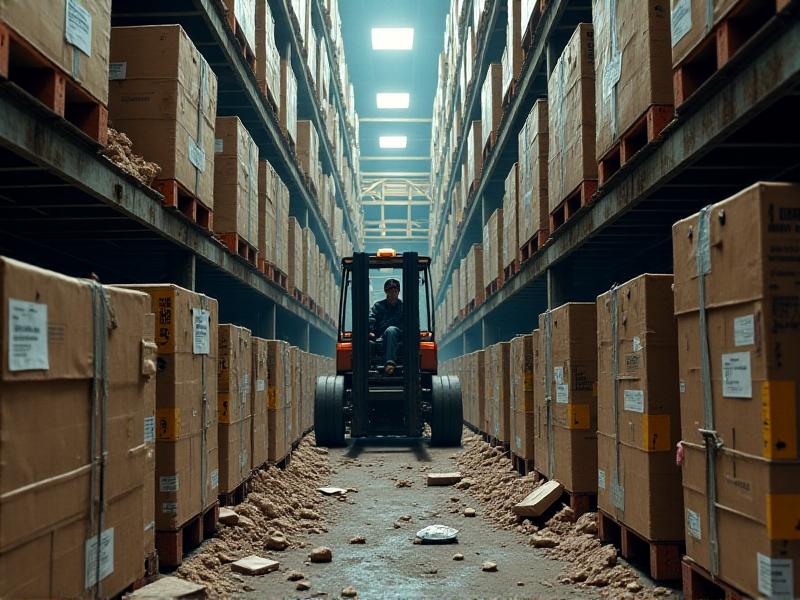The Storage Equation: Calculating Costs vs. Potential Profit
The Storage Equation: Calculating Costs vs. Potential Profit
Understanding the Basics of Storage Economics

Every business, from e-commerce giants to small-scale manufacturers, faces the challenge of balancing storage costs against revenue opportunities. Storage economics isn’t just about renting space—it’s a complex interplay of fixed expenses, variable operational fees, and the potential value of stored goods. Fixed costs include warehouse leases or property taxes, while variables encompass labor, utilities, and maintenance. The real puzzle lies in aligning these expenses with the profit margins of products sitting in storage. For instance, storing low-margin items in premium facilities can erode profits, whereas high-demand goods might justify climate-controlled environments. By mapping out these variables, businesses can identify break-even points and optimize their storage strategies.
Fixed vs. Variable Costs in Storage Solutions

Fixed costs remain constant regardless of inventory volume, making them predictable but inflexible. Leasing a warehouse at $10,000 monthly or investing in automation systems are examples. Variable costs, however, scale with usage—think labor hours, energy consumption, or perishable goods’ spoilage risks. A seasonal business might prioritize variable costs to handle holiday surges without overcommitting to year-round fixed expenses. Conversely, companies with stable demand could benefit from long-term fixed-rate contracts. The key is to analyze historical data: How often do storage needs spike? What percentage of the budget is consumed by unpredictable variables? Tools like cost-per-unit calculations help businesses allocate resources efficiently, ensuring neither underutilization nor overcapacity.
The Hidden Costs of Poor Storage Management

Inefficient storage doesn’t just dent budgets—it can trigger cascading financial setbacks. Excess inventory ties up capital, while disorganized spaces increase labor costs as workers spend hours locating items. Poorly maintained facilities risk damage to goods, leading to write-offs or customer refunds. Security breaches, such as theft or data mismanagement in digital storage systems, add another layer of risk. For example, a retailer storing electronics in a non-secure warehouse might face recurring losses from pilferage. Additionally, regulatory penalties for improper storage of hazardous materials can escalate quickly. These hidden costs often fly under the radar until audits or crises expose them. Proactive measures like inventory tracking software or routine facility inspections mitigate these risks before they snowball.
Profit Potential: Maximizing Revenue Through Smart Storage

Strategic storage isn’t just a cost center—it can drive revenue. Fast-fashion retailers, for instance, use just-in-time storage to reduce holding costs and accelerate product turnover. Similarly, cloud storage providers leverage tiered pricing models, offering premium access speeds for higher fees. Businesses can also monetize unused space: Airbnb-style platforms now allow companies to rent out excess warehouse capacity. Another angle is leveraging storage to enhance customer satisfaction. A furniture company offering short-term storage for customers during moves builds loyalty and upsells services. The profit potential hinges on aligning storage flexibility with market demand. Dynamic pricing models, where storage fees adjust based on real-time demand, further optimize revenue streams without overburdening clients.
Technology’s Role in Balancing the Storage Equation
From IoT sensors to blockchain-ledger systems, technology is revolutionizing how businesses approach storage. Automated inventory systems reduce human error and labor costs by tracking stock levels in real time. Machine learning algorithms predict demand spikes, enabling preemptive storage adjustments. For example, a food distributor might use predictive analytics to allocate more cold storage space before summer demand for beverages surges. Cloud-based platforms also enable decentralized storage networks, allowing businesses to share resources regionally. Blockchain adds transparency to supply chains, reducing disputes over storage conditions or delivery timelines. However, adopting these tools requires upfront investment. The ROI depends on scalability: A midsized retailer might start with barcode scanners, while a global logistics firm could justify AI-powered robotics.
Case Study: Retail Inventory Storage Optimization
Consider a midwestern apparel chain struggling with stockouts during peak seasons. By analyzing sales data, they identified that 30% of their storage was occupied by slow-moving winter coats, while summer apparel was crammed into inadequate space. The company transitioned to a hybrid model: leasing pop-up storage units near high-traffic stores during summer and reallocating main warehouse space for offseason items. They also implemented RFID tags to track inventory accuracy, reducing shrinkage by 18%. Within a year, storage costs dropped by 12%, and sales increased due to better stock availability. This case underscores the importance of agility—seasonal businesses, in particular, must treat storage as a dynamic asset rather than a static expense.
Environmental Impact and Cost Efficiency
Sustainable storage practices aren’t just ethically sound—they’re economically savvy. Energy-efficient lighting and solar panels cut utility bills, while reusable packaging reduces waste disposal costs. A beverage company switching to biodegradable pallet wraps might save thousands annually in landfill fees. Moreover, eco-conscious consumers increasingly favor brands with green logistics. However, sustainability requires careful planning: Installing solar panels demands upfront capital, and sourcing recycled materials can complicate supply chains. The break-even point varies by industry, but tax incentives and grants for green initiatives often tip the scales. For example, a 2023 DOE report showed warehouses using automated HVAC systems reduced energy costs by 22% while qualifying for federal rebates.
Future Trends: Predictive Analytics and Dynamic Storage Pricing
The next frontier in storage economics is predictive dynamic pricing. Similar to airline ticket algorithms, storage providers could adjust rates based on demand forecasts, weather disruptions, or fuel price trends. Imagine a scenario where a hurricane warning triggers a surge in pharmaceutical storage demand, and prices adjust automatically. AI-driven tools will also enable hyper-localized storage networks, minimizing shipping costs and carbon footprints. For instance, a 3D printing company might store raw materials in micro-warehouses near urban hubs to enable same-day production. While these innovations promise efficiency, they also raise ethical questions: Could dynamic pricing exclude smaller businesses during crises? The answer lies in balancing automation with human oversight to ensure equitable access.








